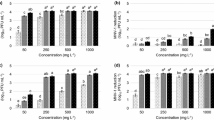Abstract
Background
The transmissible agent of Creutzfeldt-Jakob disease (CJD) is not readily destroyed by conventional sterilization and transmissions by surgical instruments have been reported. Decontamination studies have been carried out thus far on solutions or suspensions of the agent and may not reflect the behavior of surface-bound infectivity.
Materials and Methods
As a model for contaminated surgical instruments, thin stainless-steel wire segments were exposed to scrapie agent, washed exhaustively with or without treatment with 10% formaldehyde, and implanted into the brains of indicator mice. Infectivity was estimated from the time elapsing to terminal disease.
Results
Stainless steel wire (0.15 × 5 mm) exposed to scrapie-infected mouse brain homogenate and washed extensively with PBS retained the equivalent of about 105 LD50 units per segment. Treatment with 10% formaldehyde for 1 hr reduced this value by only about 30-fold.
Conclusions
The model system we have devised confirms the anecdotal reports that steel instruments can retain CJD infectivity even after formaldehyde treatment. It lends itself to a systematic study of the conditions required to effectively inactivate CJD, bovine spongiform encephalopathy, and scrapie agent adsorbed to stainless steel surfaces such as those of surgical instruments.
Similar content being viewed by others
References
Taylor DM, Fraser H, McConnell I, et al. (1994) Decontamination studies with the agents of bovine spongiform encephalopathy and scrapie. Arch. Virol. 139: 313–326.
Brown P, Gibbs CJ Jr, Amyx HL, et al. (1982) Chemical disinfection of Creutzfeldt-Jakob disease virus. N. Engl. J. Med. 306: 1279–1282.
Ernst DR, Race RE. (1993) Comparative analysis of scrapie agent inactivation methods. J. Virol. Methods 41: 193–201.
Taylor DM. (1996) Exposure to, and inactivation of, the unconventional agents that cause transmissible degenerative encephalopathies. In: Baker H, Ridley RM (eds). Prion Diseases. Humana Press, Totowa, NJ, pp. 105–118.
Taylor DM. (1993) Inactivation of SE agents. Br. Med. Bull. 49: 810–821.
Brown P. (1996) Environmental causes of human spongiform encephalopathy. In: Baker H, Ridley RM (eds). Prion Diseases. Humana Press, Totowa, NJ, pp. 139–154.
Bernoulli C, Siegfried J, Baumgartner G, et al. (1977) Danger of accidental person-to-person transmission of Creutzfeldt-Jakob disease by surgery. Lancet 1: 478–479.
Gibbs CJ Jr, Asher DM, Kobrine A, Amyx HL, Sulima MP, Gajdusek DC. (1994) Transmission of Creutzfeldt-Jakob disease to a chimpanzee by electrodes contaminated during neurosurgery. J. Neurol. Neurosurg. Psychiatry 57: 757–758.
Collinge J, Rossor MN, Thomas D, Frosh A, Tolley N. (1998) Diagnosis of Creutzfeldt-Jakob disease by measurement of S100 protein in serum. Tonsil biopsy helps diagnose new variant Creutzfeldt-Jakob disease. BMJ 317: 472–473.
Hilton DA, Fathers E, Edwards P, Ironside JW, Zajicek J. (1998) Prion immunoreactivity in appendix before clinical onset of variant Creutzfeldt-Jakob disease. Lancet 352: 703–704.
Chandler RL. (1961) Encephalopathy in mice produced by inoculation with scrapie brain material. Lancet 1: 1378–1379.
Büeler H, Aguzzi A, Sailer A, et al. (1993) Mice devoid of PrP are resistant to scrapie. Cell 73: 1339–1347.
Prusiner SB, Cochran SP, Groth DF, Downey DE, Bowman KA, Martinez HM. (1982) Measurement of the scrapie agent using an incubation time interval assay. Ann. Neurol. 11: 353–358.
Brandner S, Isenmann S, Raeber A, et al. (1996) Normal host prion protein necessary for scrapie-induced neurotoxicity. Nature 379: 339–343.
Scott MR, Safar J, Telling G, et al. (1997) Identification of a prion protein epitope modulating transmission of bovine spongiform encephalopathy prions to transgenic mice. Proc. Natl. Acad. Sci. U.S.A. 94: 14279–14284.
Telling GC, Scott M, Hsiao KK, et al. (1994) Transmission of Creutzfeldt-Jakob disease from humans to transgenic mice expressing chimeric human-mouse prion protein. Proc. Natl. Acad. Sci. U.S.A. 91: 9936–9940.
Collinge J, Palmer MS, Sidle KC, et al. (1995) Unaltered susceptibility to BSE in transgenic mice expressing human prion protein. Nature 378: 779–783.
Acknowledgments
We thank Dr. Michael A. Klein for RML4.1 and Mr. Josef Ecsoedi for care and surveillance of the mice. This work was supported by the Kanton of Zürich and by grants of the Schweizerischer Nationalfonds and the European Union to C.W.
Author information
Authors and Affiliations
Corresponding author
Additional information
Communicated by C. Weissmann.
Rights and permissions
About this article
Cite this article
Zobeley, E., Flechsig, E., Cozzio, A. et al. Infectivity of Scrapie Prions Bound to a Stainless Steel Surface. Mol Med 5, 240–243 (1999). https://doi.org/10.1007/BF03402121
Accepted:
Published:
Issue Date:
DOI: https://doi.org/10.1007/BF03402121




